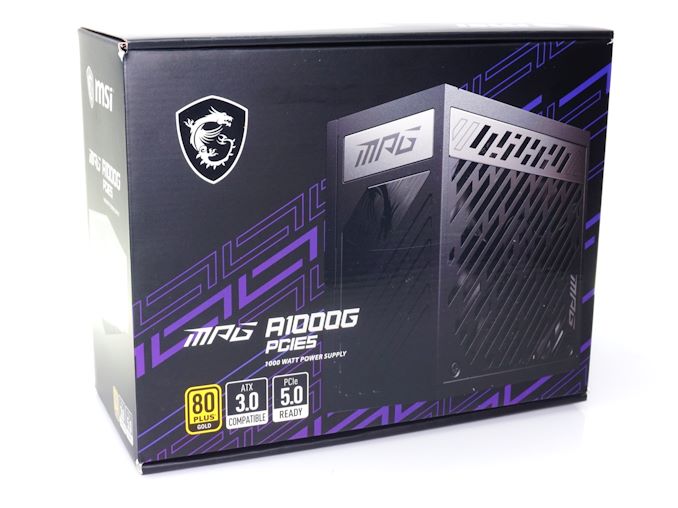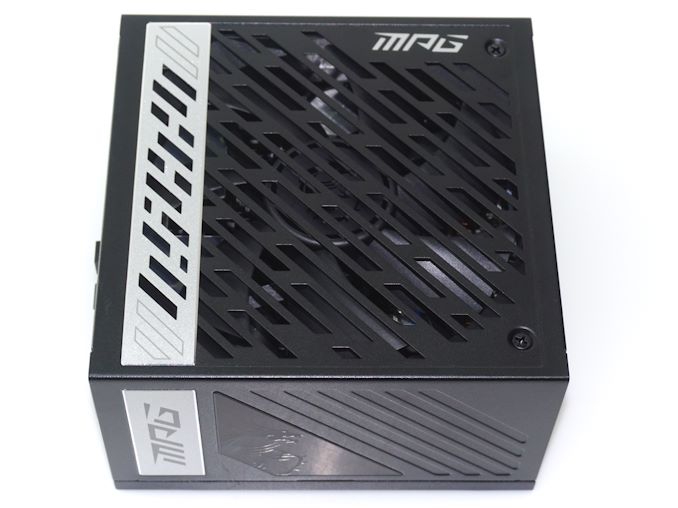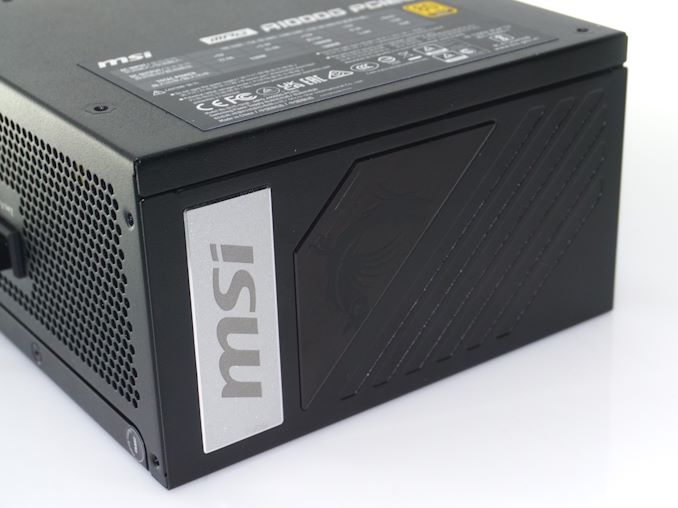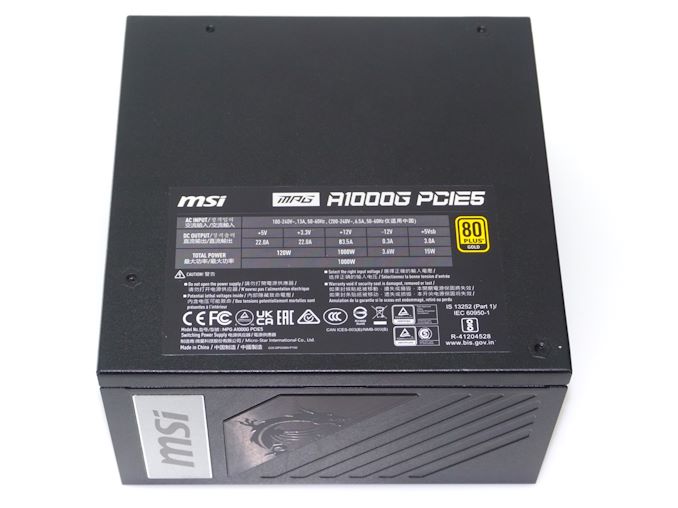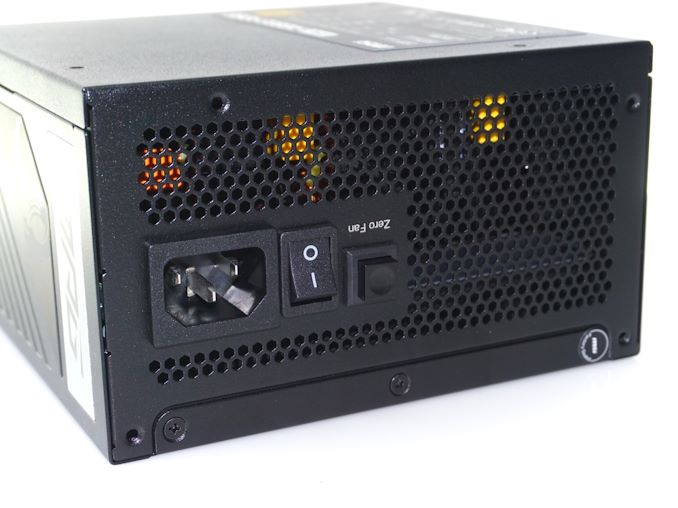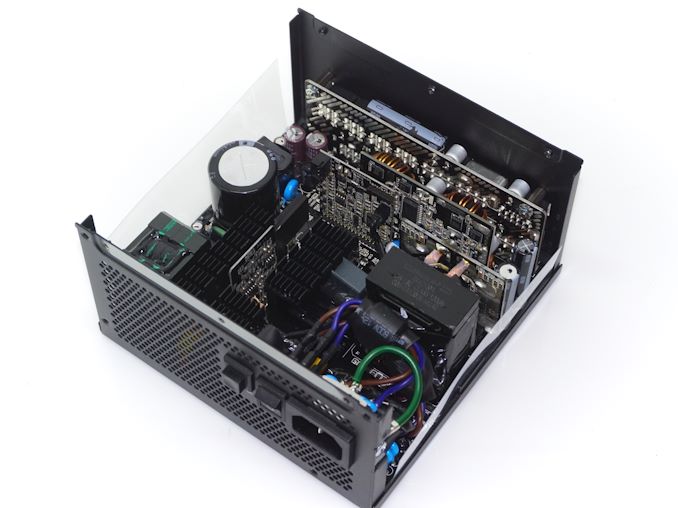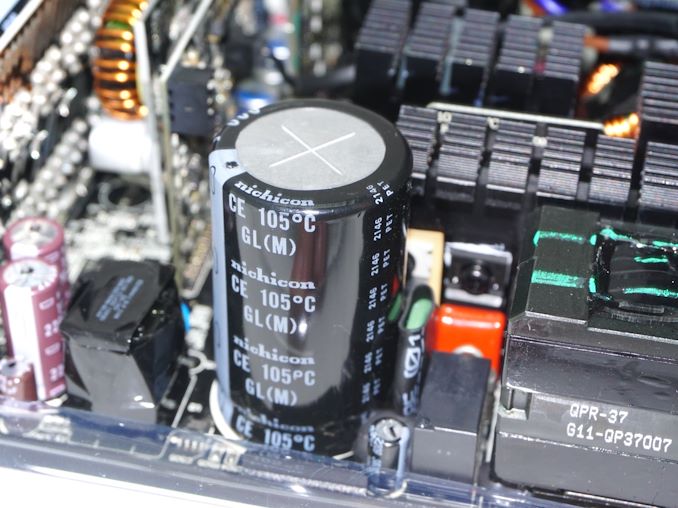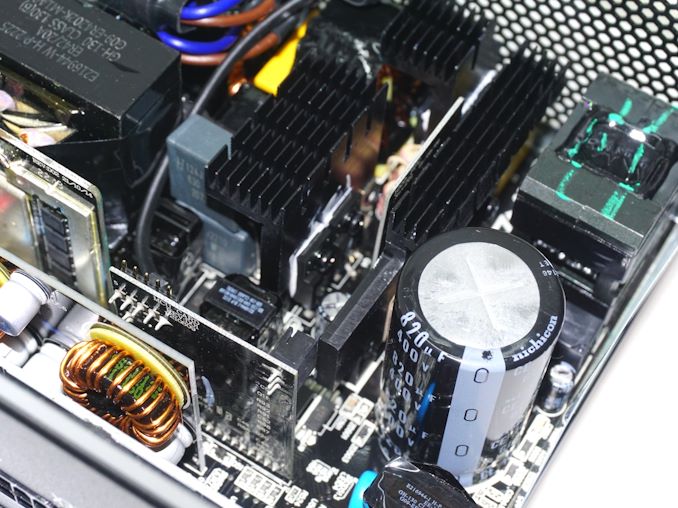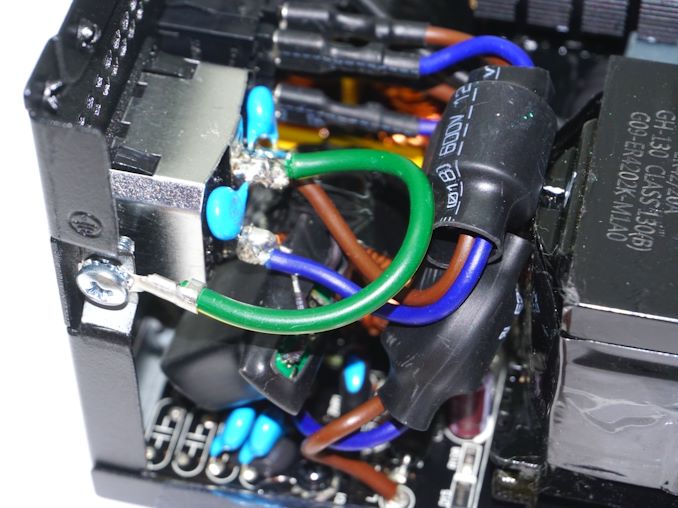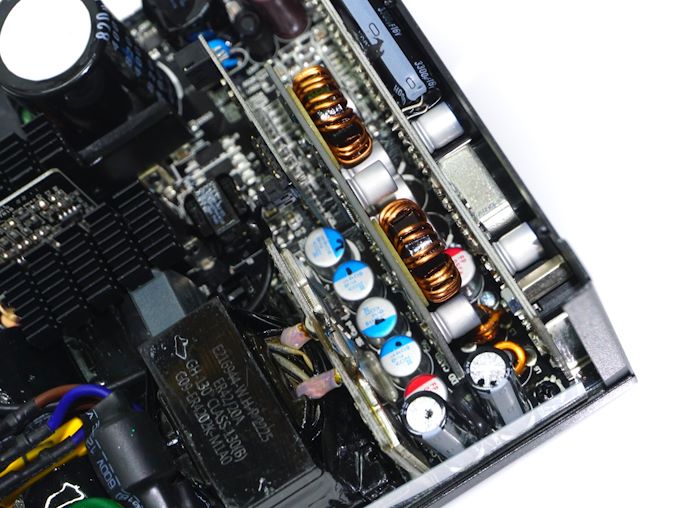Back in December, we had the opportunity to take a look at MSI’s MEG A1300P power supply, the company’s latest flagship PSU. Besides offering plenty of power, the MEG Ai1300P was also MSI’s first ATX 3.0 power supplies – and one of the first ATX 3.0 PSUs on the market overall. And while it was admittedly not a groundbreaking design overall, it was still a seminal work of sorts, sketching out a rough picture of what we should expect from other ATX 3.0 PSU designs, including MSI’s own.
The MEG Ai1300P was a true flagship PSU, for all the pros and cons that come with that. As impressive as it was overall, it was also aimed at those willing and able to deal with the hefty price tag. This is all well and good for the small fraction of the market that can afford such a high caliber PSU, but for most PC builders, budgets are a very real thing.
So, for today’s review, we are taking a look at something a little more downmarket from MSI: their MPG series. Like their flagship units, the new MPG PSUs are also are ATX 3.0 Ready, but they come at more reasonable prices. Despite that shift, the unit we’re testing today, the MPG A1000G, is still one of the most powerful PSUs MSI offers (as well as being the top MPG unit), capable of delivering a kilowatt of PC power.
| MSI MPG A1000G PCIE5 Power specifications ( Rated @ 50 °C ) |
|||||
| RAIL | +3.3V | +5V | +12V | +5Vsb | -12V |
| MAX OUTPUT | 22A | 22A | 83.5A | 3A | 0.3A |
| 120W | 1000W | 15W | 3.6W | ||
| TOTAL | 1000W | ||||
| AC INPUT | 100 – 240 VAC, 50 – 60 Hz | ||||
| MSRP | $199 | ||||
All of this marks a rather rapid ascent in the PSU space for MSI. The company released its first PSU just two years ago with the MPG GF series, which were primarily designed for gaming computers. Even though MSI stepped into a highly competitive and rather saturated market, the release of the MPG series was yet another success for the company, which MSI is hoping to further build upon with their new PCIE5-branded MPG units.
Packaging and Bundle
We received the MPG A1000G PCIE5 in a sturdy cardboard box with basic geometric artwork printed on it. The front of the box is mostly occupied by a picture of the unit itself but abundant information is printed on the sides and rear of the box. Inside the box, the unit is well-packed inside soft packaging foam, ensuring safe shipping.
The bundle of the MPG A1000G PCIE is extremely frugal, with MSI supplying only the necessary AC power cable and four black mounting screws. There are zero accessories of any kind supplied with this unit.
The MPG A1000G PCIE PSU is a fully modular design, allowing for the removal of every DC power cable, including the 24-pin ATX connector. Most of the cables have individually sleeved black wires and with black connectors. Only the 16-pin PCIe 5.0 cable and one cable with two PCIe 8-pin connectors have black wires but are wrapped in a single sleeve.
| MSI MPG A1000G PCIE5 | ||
| Connector type | Hardwired | Modular |
| ATX 24 Pin | – | 1 |
| EPS 4+4 Pin | – | 2 |
| EPS 8 Pin | – | – |
| PCI-E 5.0 | – | 1 |
| PCI-E 8 Pin | – | 6 |
| SATA | – | 12 |
| Molex | – | 4 |
| Floppy | – | 1 |
The MSI MPG A1000G PCIE 1000W PSU
External Appearance
MSI is a company that invests a lot of resources in the external appearance of its products and that includes its PSUs. Much like the MEG series unit that we reviewed a few weeks back, the MPG series is using a proprietary chassis with embossed geometrical shapes. The design is very similar to that of the MEG series but not quite the same – the golden accents are now silver and some geometrical decorations differ, with the MPG having only rectangular patterns and no triangular shapes. The PSU is just 150 mm long, making it only slightly longer than what the ATX standard dictates, yet it remains short enough to ensure its compatibility with all but the smallest ATX-compliant cases.
The sticker with the unit’s electrical certifications and specifications can be found on the otherwise plain top side of the PSU. Decorative silver and black metallic plates can be found on the sides of the unit, which plates are magnetically attached and can be flipped to match the installation orientation of the PSU.
At the rear side of the unit, right next to the AC power connector and the basic on/off switch, there is a latching push button that controls the “zero-fan mode”. As the name suggests, this mode allows for passive operation while the PSU’s load is low – a frequently applied technique by many manufacturers nowadays. Disabling it will force the fan to continuously spin as long as the PSU is powered on, but its speed will still be controlled thermally.
The front side of the unit is host to the numerous connectors for the modular cables. A subtle legend is printed directly on the chassis.
Internal Design
The cooling fan of the MPG A1000G PCIE5 is a 135 mm model by Hong Hua, a rather popular manufacturer whose fans we frequently see in quality PC PSUs. The HA13525H12SF-Z is a fan that satisfies the cooling needs of the MPG A1000G PCIE5, though it is a very high-speed fan for its size, with a maximum speed of 2300 RPM. It has a fluid dynamic bearing (FDB) engine that provides excellent longevity.
The OEM whose platform the MPG A1000G PCIE5 is based upon is Channel-Well Technologies, or CWT. CWT is a popular OEM for mid-to-high performance PSUs and they also are the OEM behind MSI’s flagship MEG series. The MPG A1000G PCIE5 is based on a different platform than that used for the MEG series, which seems to be an upgraded version of one of the CWT’s most popular platforms. This platform has been the heart of many units having a similar power output over the past few years. In order to fit the 135 mm fan in the 150 mm chassis, CWT cleverly shortened the vertical daughterboards to provide enough clearance.
Overall, the MPG A1000G PCIE5 looks very crowded because of its very high power density – the layout is fairly simple. The filtering stage is typical, with four Y capacitors, two X capacitors, and two filtering inductors. The filtering stage leads to two large rectifying bridges, which are placed on their own sizable heatsink. The passive components of the APFC circuitry are a humongous 400V/820μF APFC capacitor Nichicon and an equally large encased filtering inductor. The active APFC components are on the longest heatsink of the unit.
Two transistors can be found on their own heatsink, forming a typical half-bridge inversion topology on the primary side of the unit’s main transformer. The output of the main transformer is connected to eight power MOSFETs that generate a single 12V rail, which is placed on a vertical daughterboard. The 3.3V and 5V lines are being generated via DC-to-DC conversion circuitry that can be found on the subsequent vertical daughterboard. The secondary side capacitors are all made by Nippon Chemi-Con and Nichicon, or their subsidiary companies, making this PSU an all-Japanese affair.


